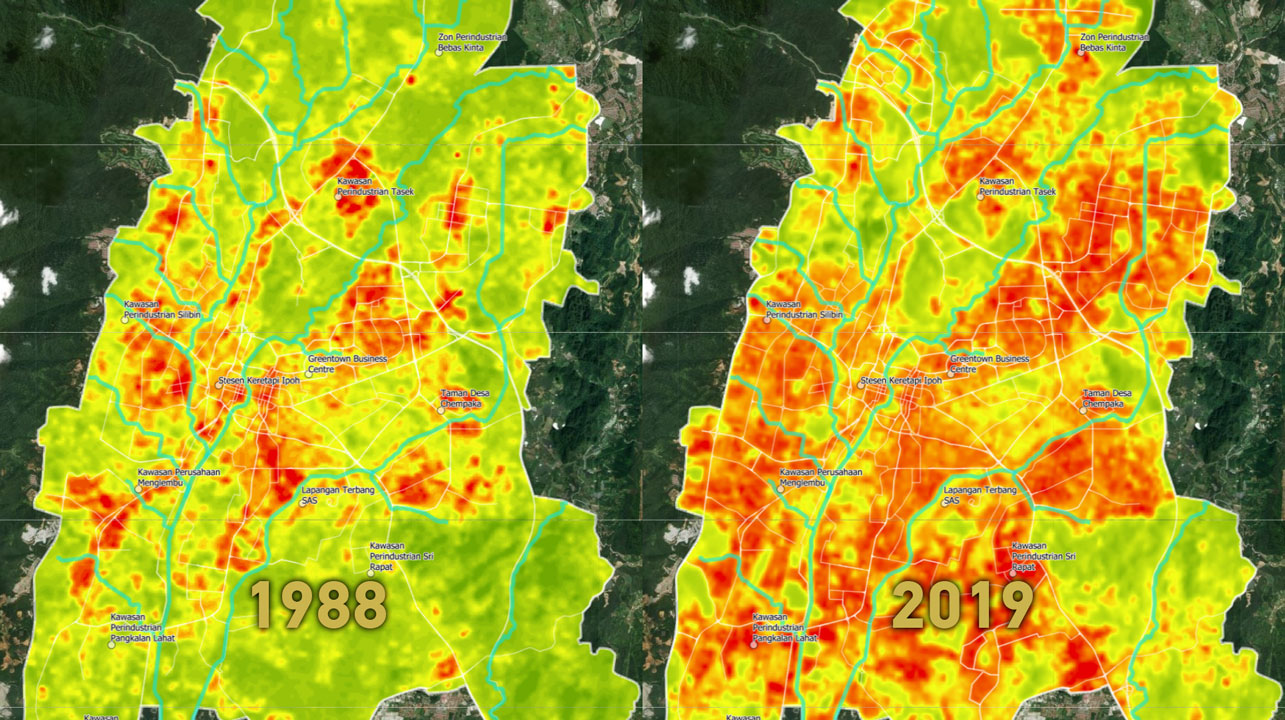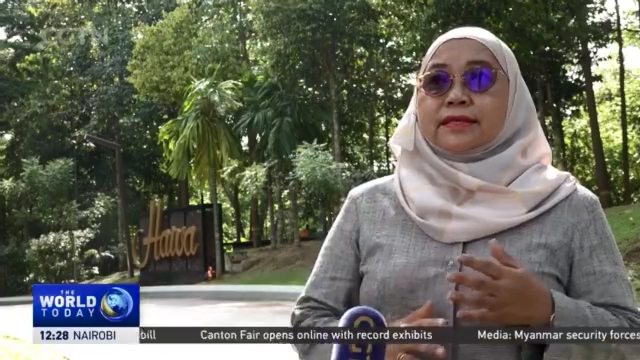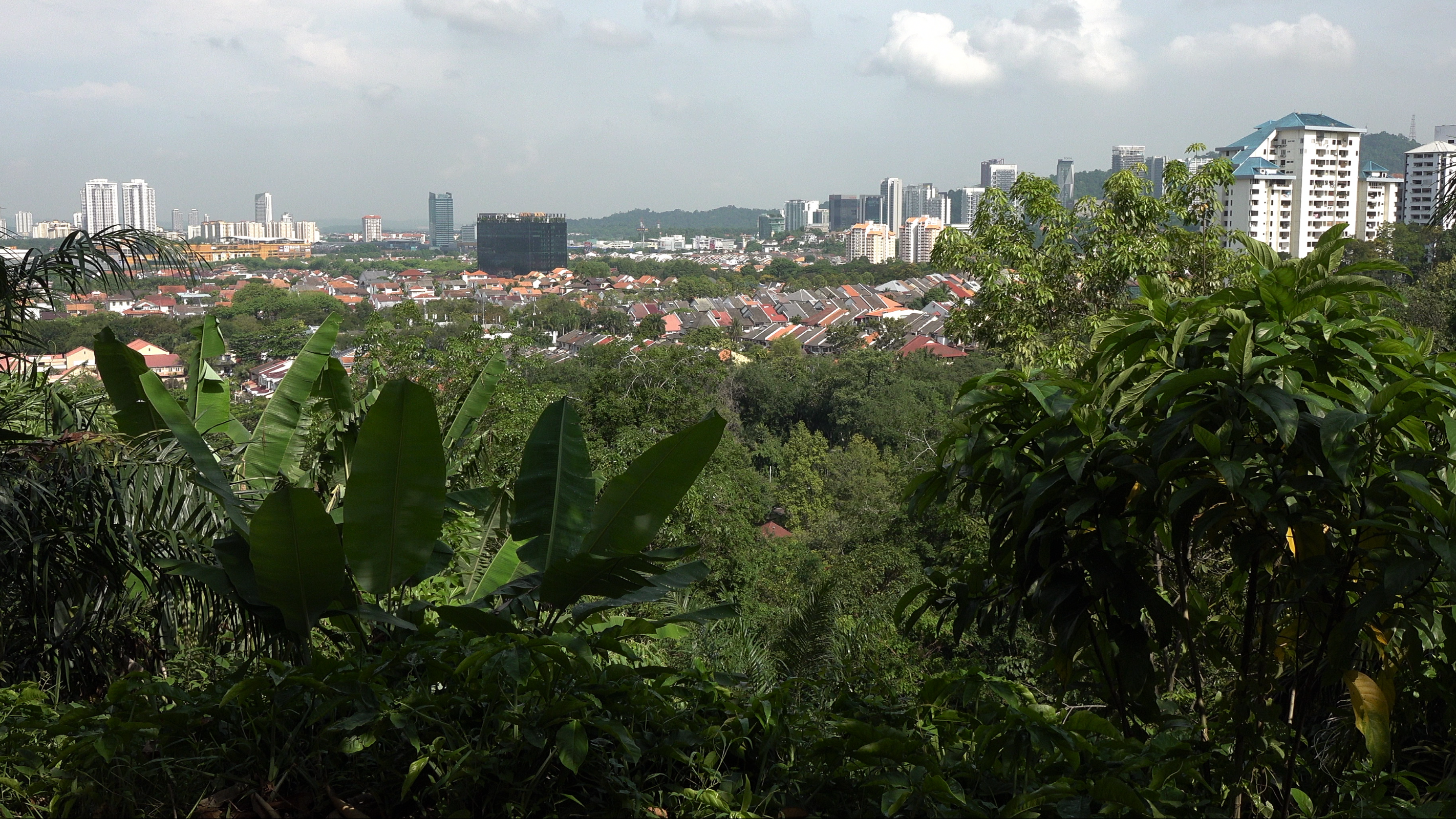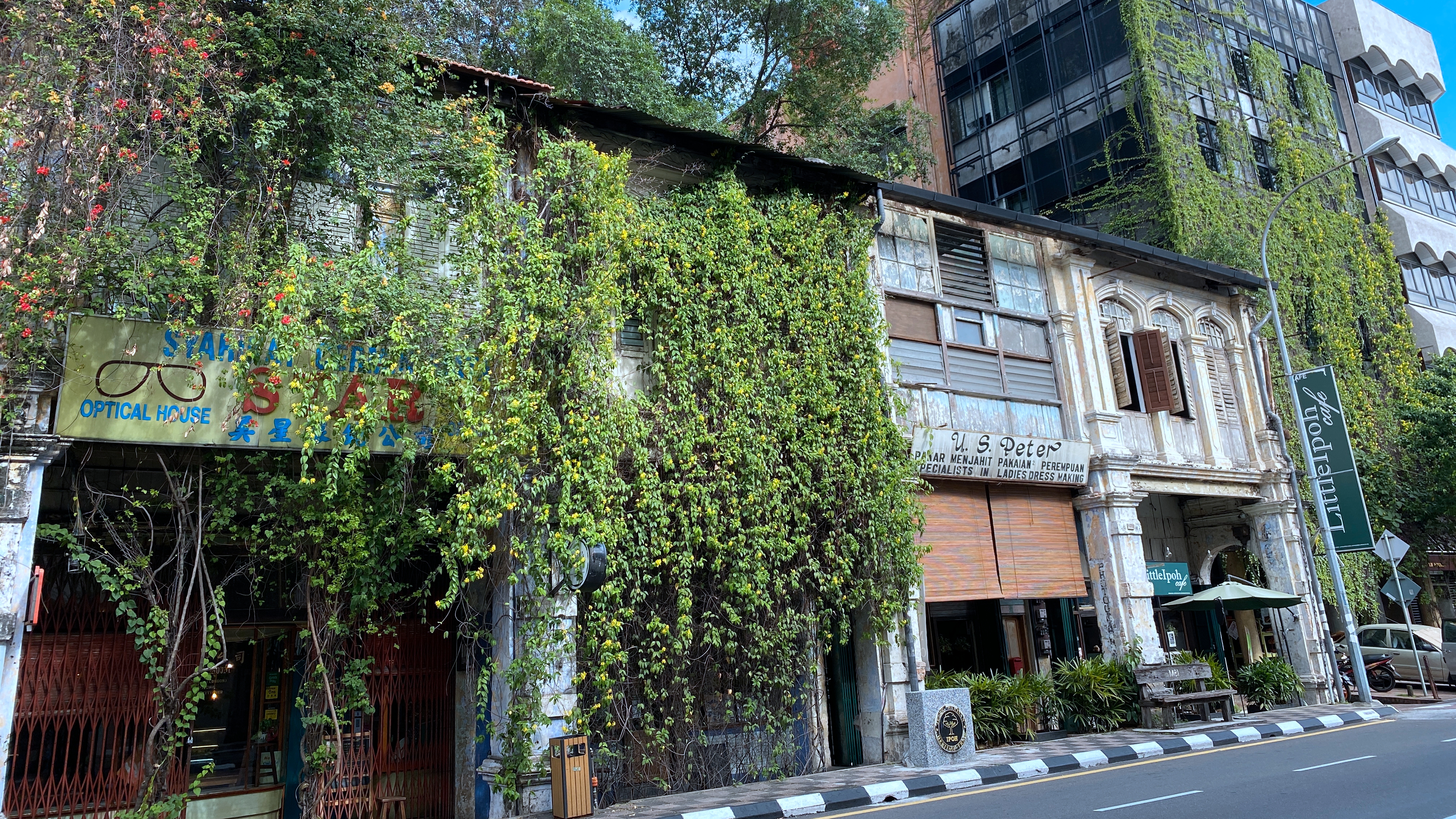
Think City used remote sensing to map the heat increases. /CGTN
Think City used remote sensing to map the heat increases. /CGTN
Think of the city of Ipoh and most Malaysians will picture limestone hills carpeted in jungle, Taoist and Buddhist cave temples, the domed, colonial-era railway station and streets lined with quaint shop houses dating back to the early part of the 20th century.
It's a place people from larger cities like Kuala Lumpur (KL) head to for a bit of fresh air and respite. So it will come as a shock for people here to learn that the average temperature in Ipoh has risen far more sharply than the capital in recent decades, more in fact than any other city in Malaysia, according to a study by urban impact consultancy Think City.
Ipoh's average temperature rose 6.75 degrees Celsius from 1998 to 2019, just ahead of Johor Bahru at the southern tip of the peninsula across from Singapore and the UNESCO heritage city of George Town on Penang island, and far head of Kuala Lumpur, which saw an increase of just 1.64 degrees Celsius over 30 years.
02:57

"The first thing we did is to use remote sensing technology, collecting satellite images to map the extent of heat in these cities," explained Dr. Ceelia Leong, analytics lead for Think City. "The satellite image actually captured thermal energy that radiates from the surface of the Earth. We go back to find as clear as possible data to examine the differences."
Climate change clearly plays a role in the temperature increases, Leong said. But there are other factors that have contributed to the sharp rise in places such as Ipoh.
"The unbearable heat is because of urban heat island effect. When you replace the green areas and the built-up areas increase, the material used in the buildings, in the roads, in the pavement, these are materials that absorb and retain heat."

KL is one of the greenest cities in SE Asia. Rian Maelzer/CGTN
KL is one of the greenest cities in SE Asia. Rian Maelzer/CGTN
So why then has Kuala Lumpur's temperature increase been so much less pronounced? People who live in or have visited other Southeast Asian cities, with the exception of Singapore, will probably quickly grasp why.
Kuala Lumpur city has retained a lot of greenery.
"Kuala Lumpur City Center has demonstrated efficiency of urban greening as a coolant," Leong said.
Kuala Lumpur has tree-lined streets, small parks, large forest parks, botanical gardens.
Rotina Mohd Daik is the director general of the country's National Landscape Department (NLD). Walking around a large and popular urban forest park, criss-crossed by walking and biking trails, she takes evident pride in the job KL – and her department – have been doing.
"I think it is important for other cities to emulate program that KL is doing," Rotina said.
As a national body, the department has formulated a landscape master plan for cities across Malaysia, so that greening is not done in an ad hoc way. The NLD encourages the planting of trees, creation of green corridors, small nature squares and large parks of greater than 100 hectares in size.

Some are taking their own initiative to combat rising temperatures in Ipoh, Malaysia. Rian Maelzer/CGTN
Some are taking their own initiative to combat rising temperatures in Ipoh, Malaysia. Rian Maelzer/CGTN
While developers are required to set aside 10 percent of their developments as green space, the NLD encourages local councils to set a target of 30 percent.
"We have to preserve our landscape," Rotina says. "At the same time, we develop the cities with more parks, urban green connectivity, more green linkages where people can walk and cycle in the cities under a canopy of trees and shaded areas. Developing green infrastructure."
The National Landscape Department says it is open to working with corporations and civil society to help green the country's cities, and combat the urban heat island effect and climate change.
"We also collaborate with Think City doing a study to identify trees which are resilient to climate change. So in this study, trees will be identified and the trees that which are suitable for the climate change will be encouraged to be planted by the local authorities."
But it's not just about planting trees or creating green spaces. Leong from Think City says it has to be done strategically to have maximum benefit.
"If you have the right approach of tree planting, you actually can cool off the area with the shade and also a wind influence, and this will stop the temperature from increasing," Leong said.
"You have to plant the right species of trees at the right locations, and you can potentially reduce from 2 to 8 degrees or higher. This is from what you call a true nature-based solution. "
"We want to raise awareness and educate the community by sharing our findings with them," Leong said. "You can visualize, you can see it happening in your neighborhood. That's the one that is going to be a shocker for everybody: 'Oh my God, the place I'm living in really is becoming hotter and this is supported by scientific evidence.'"
In a country where average daytime highs already routinely hit 33 degrees Celsius coupled with high humidity, measures that can halt or even reverse temperature increases are not just about keeping cities like Ipoh attractive places to live or visit. They are imperative to people's health and well-being, Leong and Rotina said.

